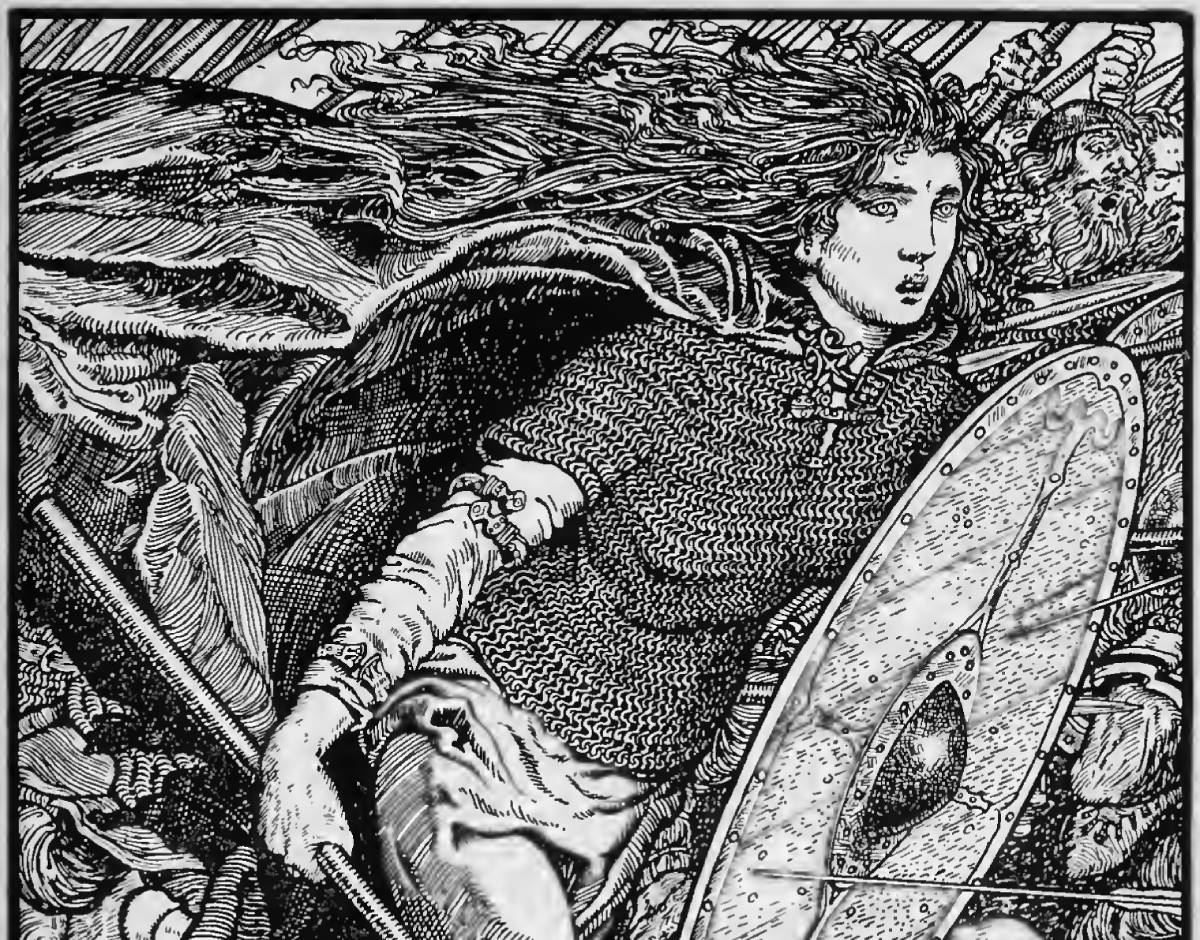So often in history, women’s voices and stories are silenced and non-existent. Not so for the fierce Viking warrior and one-time wife of Ragnar Lothbrok, Lagertha.

From leading an army in battle to apparently keeping a pet bear outside her home, the life of Lagertha is one of the most interesting and intriguing women recorded from the Viking Age.
A life recorded in the 12th century
Like so many of the important characters, influences, and rulers of the “Viking Age,” there is little left to us other than what many historians and academics have called “Christian propaganda.” The medieval period saw the advent of the Christianization of Scandinavia, and peoples in these “Viking” societies converted from their old Norse pagan beliefs to the one “true” religion. Much of the academic learning and education was done under the auspices of the Christian church, especially the writing of history.
It should be no surprise, therefore, that much of what has been passed down to us about Viking societies, peoples, and culture is heavily biased – Christian monks, priests, and abbots wanted to highlight the “barbarity” and “savagery” of the pagan nature of these pre-Christian societies and peoples.
No more is this evident than with the story of Lagertha. What we know about her is passed down to us by a 12th-century Danish Christian historian, Saxo Grammaticus. Grammaticus was an important figure in medieval Europe as he compiled the first history of Denmark, Gesta Danorum, with many details about the fledgling kingdom’s ancestral Viking roots.
A shield maiden ahead of her time
What makes the biography of Lagertha so fascinating and intriguing is that, according to Grammaticus, she was a “shield-maiden.” This is a type of female warrior plucked from the pages of Scandinavian folklore and mythology. Whether they actually existed is open to historical debate, but we have many records of fierce Viking women having fought in battle.
Perhaps the most famous example of a “shield-maiden” was Lief Erikson’s pregnant half-sister, Freydís Eiríksdóttir. She accompanied Erikson’s voyage to “Vinland” (in what historians believe is now Newfoundland, Canada), as mentioned in the Greenland Saga. When this embryonic settlement was attacked by what the Norse called skrælings, Eiríksdóttir was said to have bared her breasts and a sword and managed to scare them away.
Of course, the mythical “Valkyries” are based on such fierce warriors.
From a bordello to the battlefield to a bride
The beginning of the biography of Lagertha, according to Grammaticus, places her firmly as a warrior. Sometime in the middle to late 9th century, the then King of Sweden Frø invaded the Norwegian kingdom and killed its king, Siward. To add insult to injury, Frø placed all of Siward’s female relations in a brothel for further humiliation.
Whilst away on campaign, the famous Viking warrior, the scourge of Paris, and grandson of Siward – Ragnar Lothbrok – heard about this brutal murder and familial humiliation. He then led an army into Norway to seek revenge.
Amongst the women that had been placed in a brothel was Lagertha. She, along with many other women, slipped out of the brothel, disguised themselves as men, and helped Ragnar in his battle against Frø. According to Grammaticus, Lagertha “though a maiden, had the courage of a man and fought in front among the bravest with her hair loose on her shoulders.”
Impressed by her martial skills, Lothbrok began to court her from afar. However, she returned to live in the Gaula valley, in western Norway. Arriving there to seek her hand in marriage, Lothbrok was set upon by both a bear and a great hound. He killed the bear with a spear and choked the hound to death. Both animals were actually guard pets of Lagertha, and their death was, somewhat bizarrely, what ultimately decided the fate of the couple. By witnessing firsthand his martial skills, she accepted his proposal of marriage.

Legend has it that Lothbrok met his end battling King Ælla of Northumbria. Lothbrok and his men were finally defeated in battle in Northumbria, and King Ælla is said to have thrown Lothbrok into a pit filled with poisonous snakes. Photo: Leah Morillon / Pexels
Divorce and riding in to save the day for an ex…
Following their unusual courtship, the couple married, and Lagertha bore three children, of which we only have the name of their son, Fridlief. If we are to believe Grammaticus, though the couple were married and had children, Lothbork was somewhat still annoyed that Lagertha had set her guard animals on him. Whilst away on campaign in Demark, he divorced Lagertha to remarry a daughter of King Harraud of Sweden.
During this time, he was facing stiff opposition throughout Denmark and needed military aid. In what appears to be a magnanimous gesture, Lagertha came to his aid with over 120 ships. At the climax of a fierce battle, when Lothbrok’s son, Siward, was wounded and about to be killed, Lagertha literally rode in to save the day with a fierce counterattack that saved the life of Siward and the rule of Lothbrok.
Did she actually exist, though?
At the end of the battle, where Lagertha rides in to save the day is where Grammaticus finishes her biography. First and foremost, there is no strong historical evidence that she actually existed, and, if she did, we do not know an approximate lifespan. If she was the wife of Ragnar Lothbrok – another historically slippery character – then she must have been alive sometime in the 9th century CE.
So why then did Grammaticus include what many historians believe to be a fictional character in a serious history of early Denmark? The medieval Christian church had exceptionally rigid gender roles – women were beings whose main purpose was the bearing of children. The inclusion of a warrior woman – who would bear arms and not play the role of a meek, subjugated wife – into this chronicle was a good opportunity for Grammaticus to show how “barbaric” these pagan societies were. Contrasting what was expected of a woman and wife with the story of Lagertha helped spread Christian propaganda and gender roles.
Regardless of whether she existed, Lagertha’s Amazonian martial skills and refusal to conform to early medieval standards and gender roles make for a fascinating read nonetheless.





